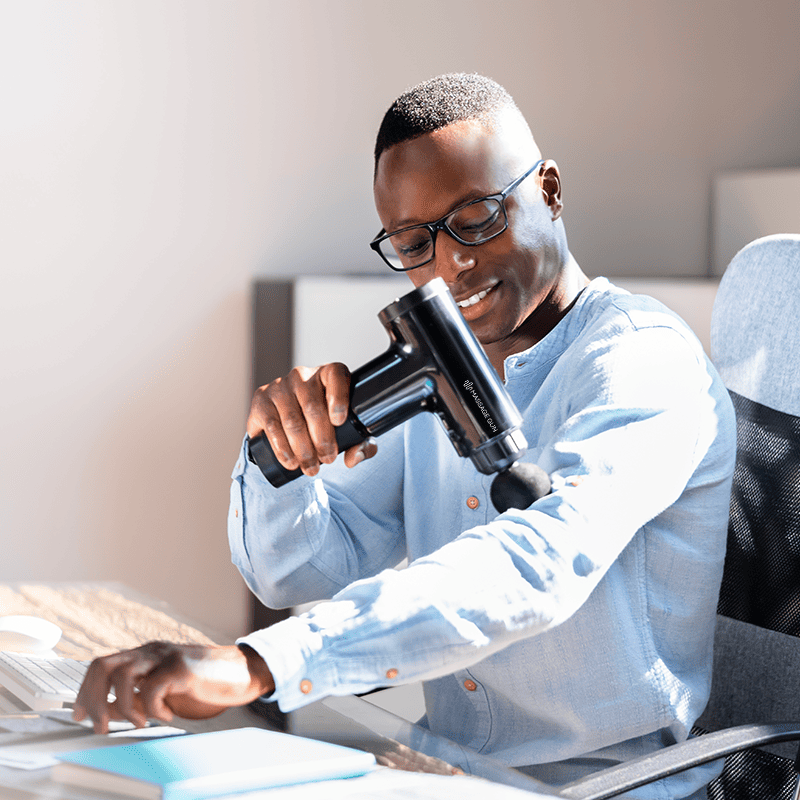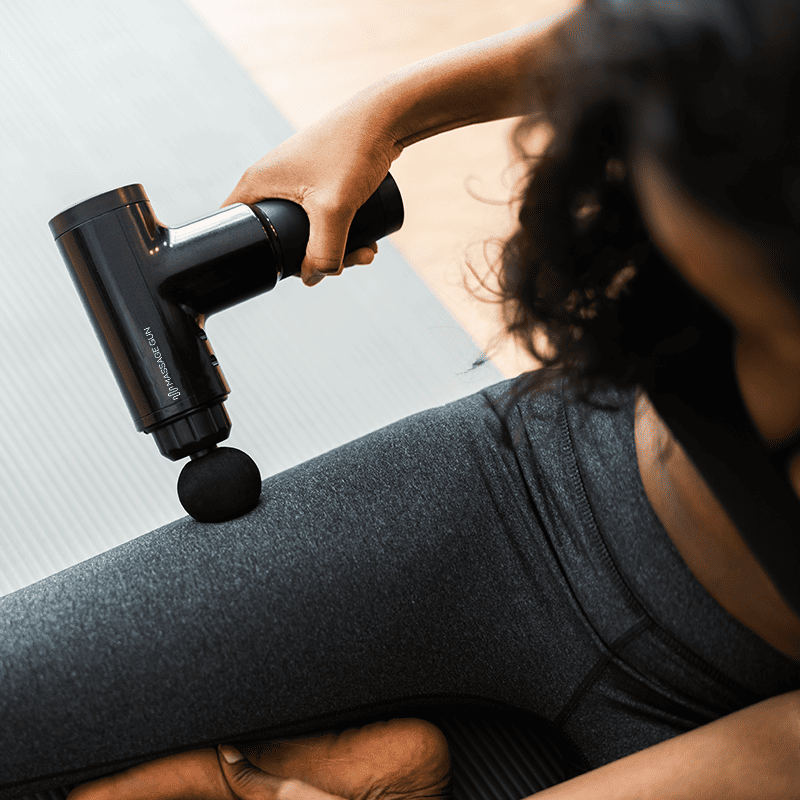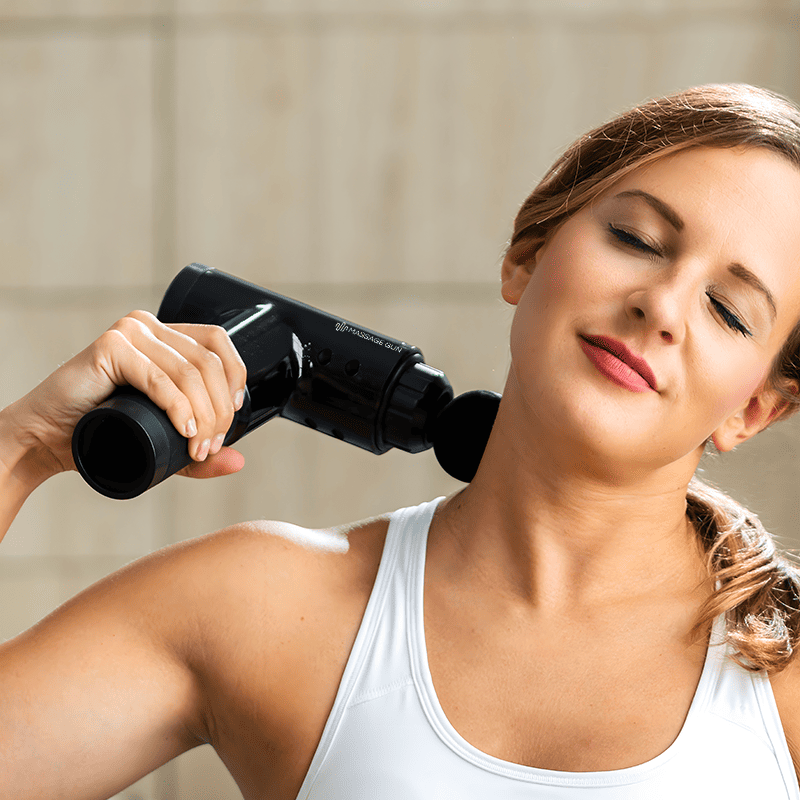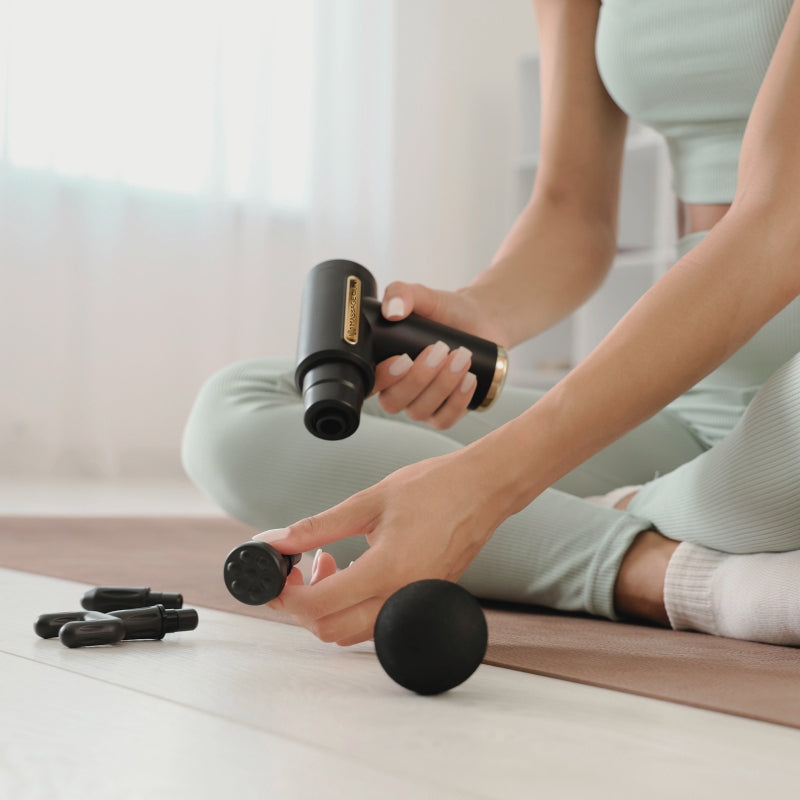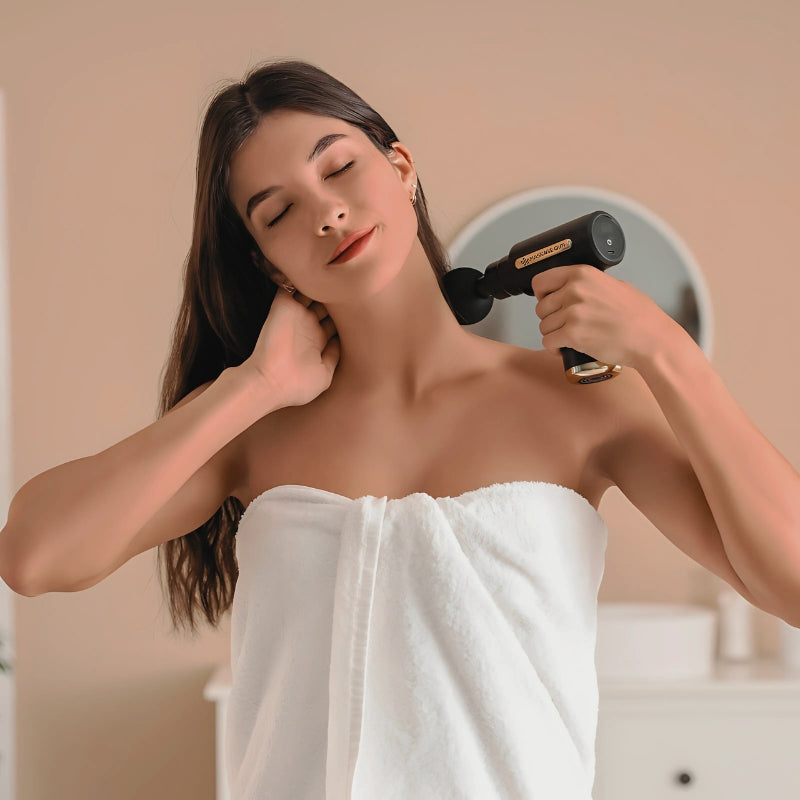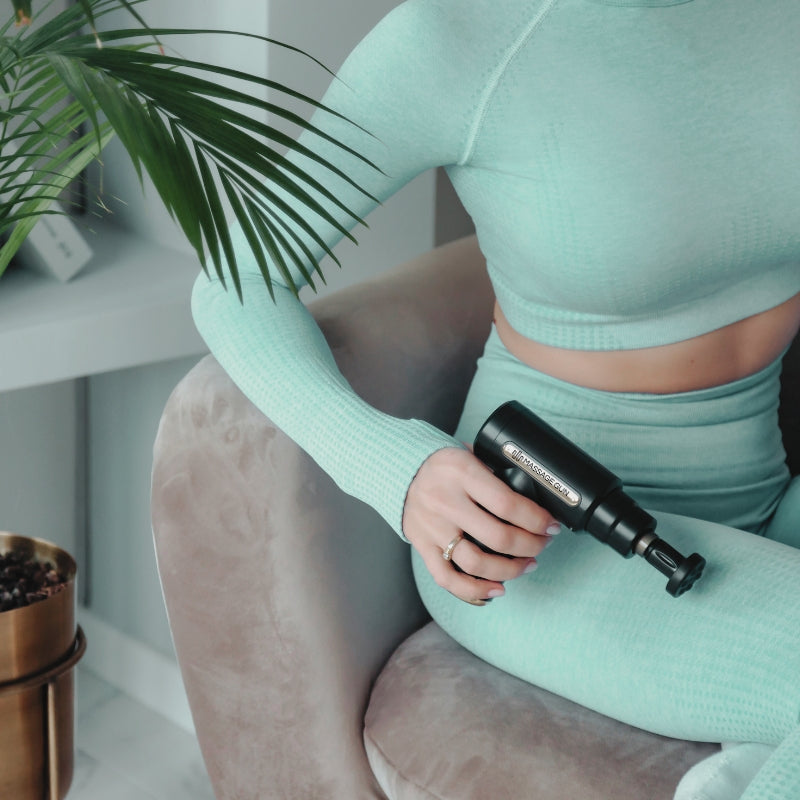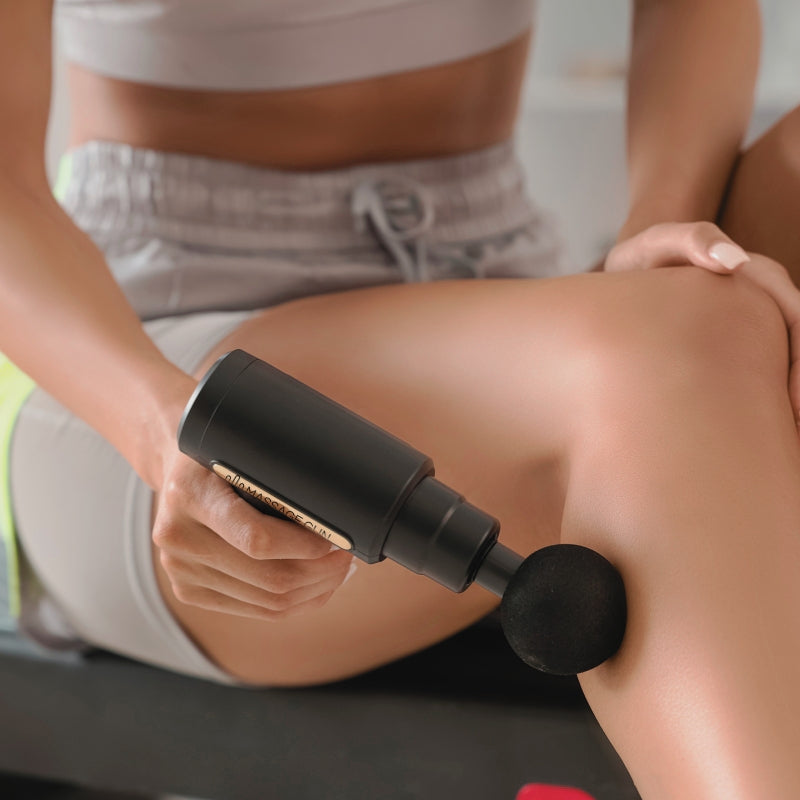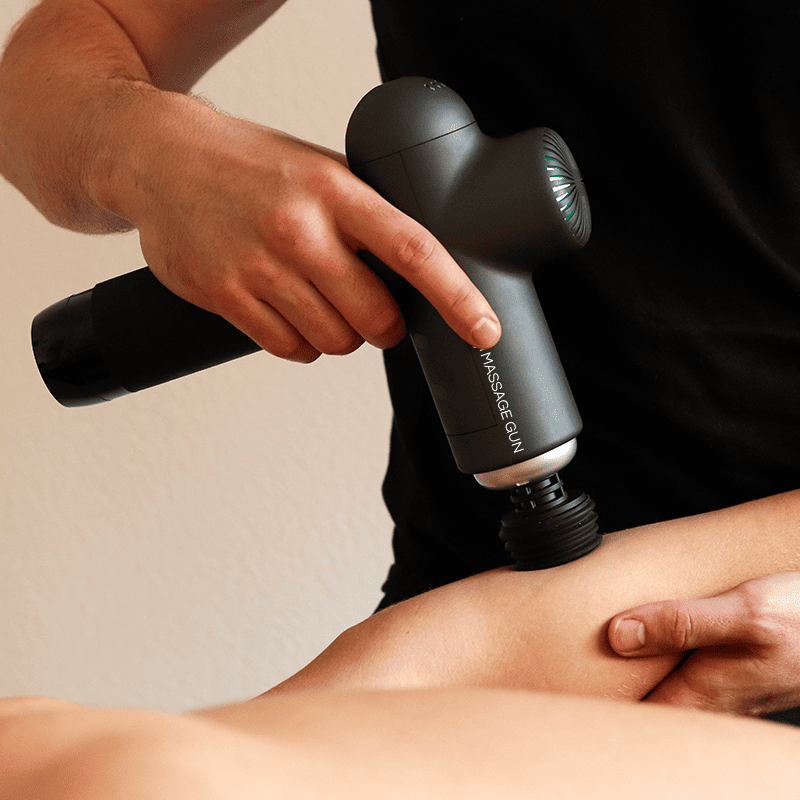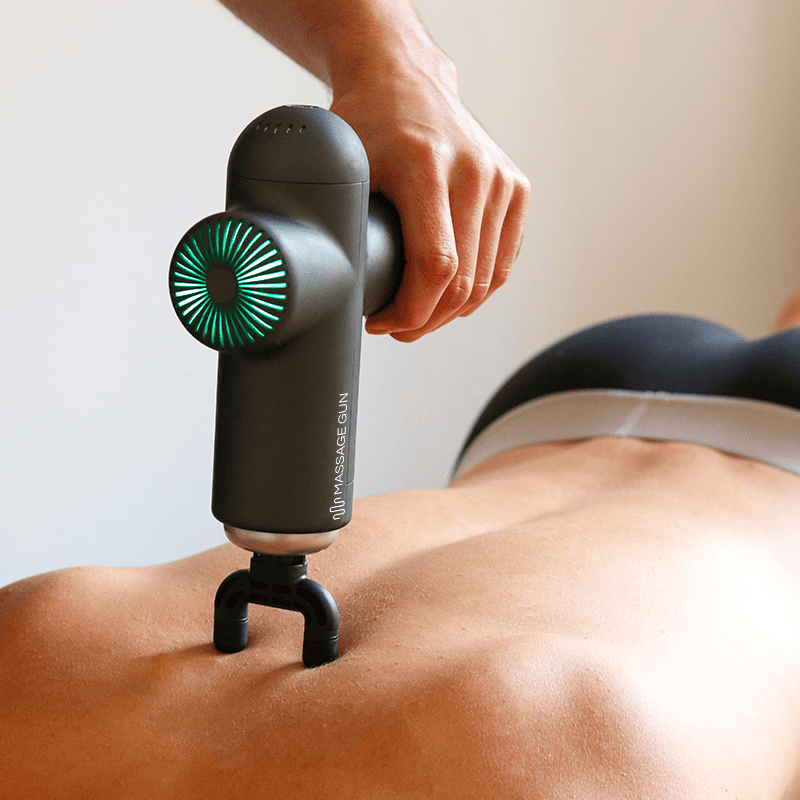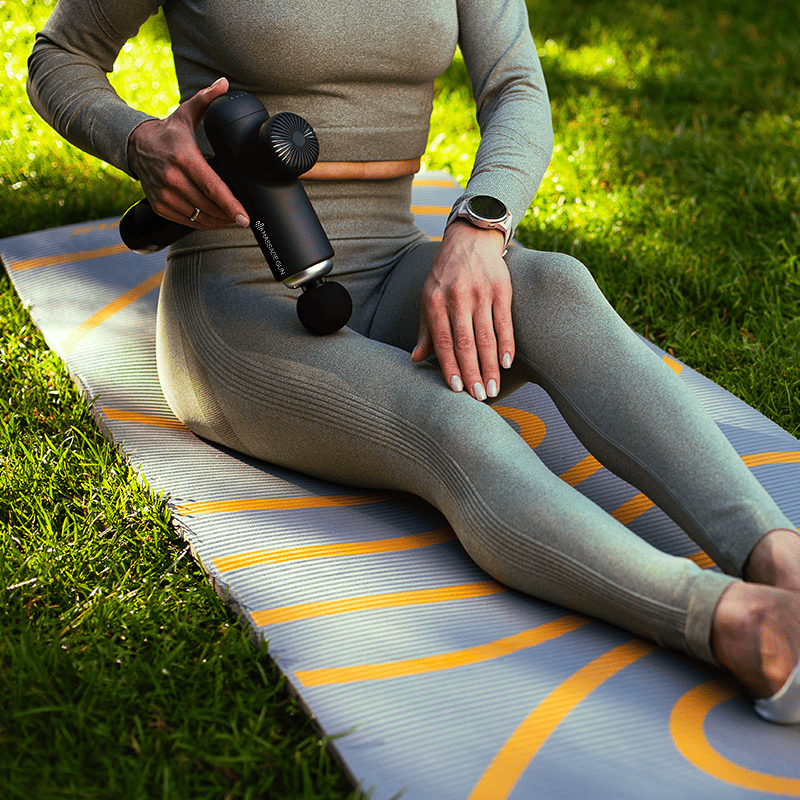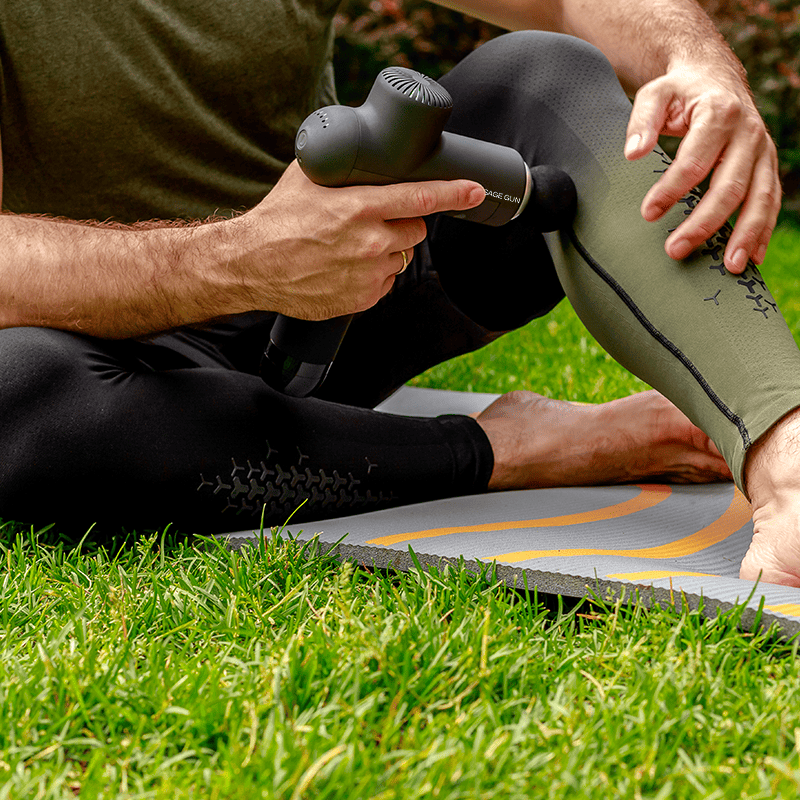Massage guns have become a popular tool for muscle recovery, pain relief, and enhancing physical performance. These handheld devices deliver percussive therapy, which uses rapid pulses of pressure to target muscle tissue.
But are they truly effective for relieving soreness, increasing mobility, and improving recovery after a workout? In this guide, we explore the benefits, risks, and proper use of massage guns to help you decide if they are worth incorporating into your recovery routine.
Understanding how massage guns work

What is a massage gun?
A massage gun is a device that delivers percussive therapy by applying repetitive pressure to specific areas of the body. The device’s motor drives a massage head into the muscle tissue, promoting blood flow and relieving pain by breaking down lactic acid and reducing muscle tension.
Massage guns can help treat sore muscles, improve range of motion, and reduce delayed onset muscle soreness (DOMS) after physical activity. These tools are generally safe when used correctly, but improper use can potentially cause tissue damage.
What is percussive therapy?

Percussive therapy uses rapid bursts of pressure to massage the muscles and penetrate deep tissue layers. This therapy stimulates blood circulation, reduces stress, and increases mobility in tight or injured muscles. It can also help relieve pain and improve recovery by reducing inflammation in targeted areas.
Scientific research published in the Journal of Sports Medicine has shown that percussive massage is particularly effective at improving muscle recovery and promoting flexibility.
Benefits of using a massage gun
Reducing muscle soreness and tension
One of the 11 benefits of massage guns is their ability to reduce muscle soreness and tension after exercise. By enhancing blood flow and breaking up lactic acid, massage guns are especially effective in the post-workout recovery phase.
They help minimize delayed onset muscle soreness, which typically occurs 24-48 hours after a strenuous workout. Massage guns have been shown to decrease muscle pain by targeting tight or inflamed muscle groups and promoting faster healing.
Improving range of motion and flexibility
Regular use of a massage gun can lead to improved range of motion and increased flexibility. This is because percussive therapy helps relax tight muscles, reduce scar tissue, and enhance joint mobility.
Massage guns can help prevent injuries during exercise by loosening muscle groups before a workout. For those with decreased mobility, using a massage gun may help improve flexibility over time.
Enhancing athletic performance
Athletes often use massage guns to speed up their recovery time between training sessions and improve overall performance. By reducing muscle tension and increasing blood flow, massage guns enable athletes to train more frequently without the muscle pain or stiffness that typically follows intense exercise.
Research has shown that using a percussion massage gun can improve muscle strength, endurance, and recovery times, allowing athletes to push their limits safely.
Potential drawbacks and risks of massage guns

Overuse and improper technique
While massage guns are effective when used properly, improper technique or overuse can lead to injuries. Applying too much pressure for too long can cause bruising, inflammation, or even tissue damage, especially if used on sensitive areas like bones or joints.
Physical therapists recommend starting with lower pressure settings and focusing on a specific area for no more than 2-3 minutes at a time. Consult a healthcare professional if you have any pre-existing conditions before using a massage gun.
Who should avoid using a massage gun?

Certain individuals, such as those with chronic conditions, severe injuries, or circulatory problems, should avoid using massage guns without medical advice. Pregnant women and people with blood clotting disorders are also advised to seek guidance before using a massage gun.
Improper use can cause harm to those with these conditions, as the intense vibrations can affect blood circulation or exacerbate tissue damage. Always consult a healthcare professional if you are unsure whether a massage gun is safe for you.
How to use a massage gun effectively?
Using a massage gun for warm-up and cool-down
A massage gun can be an effective tool for both warm-up and cool-down routines. Before a workout, using the massage gun can stimulate blood flow and loosen tight muscles, reducing the risk of injury.
After exercise, a massage gun can reduce muscle stiffness and soreness by promoting faster muscle recovery. Focus on major muscle groups like the legs, back, and shoulders for 1-2 minutes each to achieve optimal results.
Key features to look for in a massage gun

When purchasing a massage gun, consider key features such as motor power, adjustable pressure settings, battery life, and weight. Some models come with multiple attachments for targeting different muscle groups and providing deep tissue relief.
If you need a massage gun for more intense recovery, choosing one with a powerful motor and adjustable speed settings is essential. Handheld and portable designs are also ideal for home use and travel.
Are massage guns really worth it?
Cost vs. benefit analysis
The cost of a massage gun ranges from $100 to over $600. For athletes and individuals who experience frequent muscle soreness, the benefits of investing in a high-quality massage gun can outweigh the price.
However, for casual users or those with minimal muscle tension, a foam roller may provide a cheaper alternative for muscle recovery. For most, a massage gun will provide relief and improved flexibility over time, but it’s important to assess how often you will use it to justify the cost.
Who benefits the most from using a massage gun?
The people who benefit the most from massage guns include athletes, fitness enthusiasts, and individuals with chronic muscle tension. For those who engage in regular physical activity, a massage gun can significantly reduce recovery time and improve overall muscle health.
However, not everyone may need a massage gun. Some individuals may find that traditional methods of recovery, like stretching or massage therapy, are enough to relieve pain and improve mobility.

The science behind massage guns
What research says about massage guns?
Studies published in the International Journal of Sports Medicine and other reputable journals have demonstrated that massage guns can effectively reduce muscle soreness and improve recovery after exercise.
These studies show that percussive therapy can enhance blood circulation, reduce DOMS, and improve muscle flexibility when used correctly.
However, massage guns should not be viewed as a cure-all for serious injuries or deep muscle tissue problems. For more serious issues, it’s best to consult a physical therapist.
In conclusion, massage guns are an effective tool for improving muscle recovery, reducing soreness, and enhancing performance when used correctly. Whether you’re an athlete or someone looking to reduce muscle tension after a long day, massage guns offer a convenient and powerful solution.
However, like any recovery tool, proper technique and understanding your body’s needs are crucial to avoid injury.
Frequently asked questions

1. Are massage guns effective for muscle recovery?
Yes, massage guns are effective for muscle recovery because they use percussion therapy to reduce soreness and promote healing in soft tissue. By helping to break down scar tissue and decreasing muscle pain, they improve blood flow and aid in the removal of lactic acid after a post workout session.
Studies show that massage gun therapy helps in recovering faster by reducing post-exercise soreness and improving flexibility. This systematic review of the benefits shows that massage guns can be a great addition to your home improvement recovery routine.
2. Can massage guns help reduce muscle soreness?
Yes, massage guns are highly effective at reducing soreness by using vibration therapy to target deep muscle mass and soft tissue. They apply focused pressure through percussion to relieve tension and improve blood circulation, which accelerates recovery after strength training.
Massage guns are particularly helpful in the post-workout phase to ease back pain and reduce muscle soreness. Clinical evidence supports their effectiveness in decreasing muscle pain and enhancing overall recovery.
3. How do massage guns improve flexibility?
Massage guns help with improving flexibility by relaxing tight muscles and enhancing range of motion. When used properly, they stimulate the soft tissue, breaking down any scar tissue that might be restricting mobility. This percussion therapy promotes healing and improves the whole body’s flexibility.
Many massage therapists and physical therapy experts recommend using a massage gun for increasing flexibility before and after workouts. The vibration therapy also helps in improving flexibility over time with regular use.
4. Are massage guns worth it for athletes?
For athletes, massage guns are definitely worth the investment, as they have a good impact on muscle recovery and strength training. They offer percussion massage therapy, which can be more effective than traditional methods in reducing soreness and improving performance.
Athletes who use massage guns for post-workout recovery report less muscle pain and quicker recovery times. Experts say these devices get the job done by promoting healing and helping athletes recovering from intense sessions of physical activity.
5. Do massage guns help with chronic pain?
While massage guns can help relieve back pain and muscle pain related to tension or overuse, they may not be ideal for those with chronic pain conditions.
Massage guns work by applying percussion therapy to soft tissue, but chronic pain may require more effective treatment like physical therapy or consultations with a certified professional. If you suffer from chronic pain, it’s important to consult healthcare providers before relying solely on a massage gun for relief.
6. Can massage guns replace professional massage therapy?
Although massage guns can provide good relief from muscle soreness, they do not replace the expertise of a massage therapist. Massage therapists provide tailored treatments that address specific conditions, while massage guns are a convenient at-home tool.
That said, massage guns are an excellent supplement for all home use when recovering from strength training or dealing with soft tissue tightness. Their impact on muscle recovery is well-documented, but for deep tissue issues or complex injuries, professional massage therapy or physical therapy is recommended.
7. How often should I use a massage gun for it to be effective?
For good results, use a massage gun 3-4 times a week. Applying it for 2-3 minutes on each muscle group helps reduce soreness and improves recovery after workouts. If you are dealing with back pain or post-exercise muscle fatigue, a short session using vibration therapy can make a big difference in how you feel.
However, be cautious not to overuse it, as too much pressure can cause bruising or irritation in sensitive areas.
8. Can massage guns help prevent injuries?
Yes, massage guns can help prevent injuries by loosening tight muscles and improving blood circulation before physical activities. Using a massage gun for warm-up sessions can reduce muscle stiffness, making it less likely that you will pull or strain a muscle during exercise.
Experts recommend adding percussion therapy to your pre- and post-exercise routines for this reason. It’s a little thing that can make a big difference in your whole body's readiness for physical activity.
9. Do massage guns work for back pain?
Yes, massage guns can be highly effective for back pain caused by muscle tension or poor posture. By applying vibration therapy to the affected area, the device helps reduce muscle tension and improve circulation.
However, for individuals with serious back conditions, like herniated discs, it’s best to consult healthcare professionals before using a massage gun. When used correctly, massage guns are a great tool for managing post-workout back pain and improving soft tissue health.
10. What are the risks of using a massage gun?
While massage guns are generally safe, improper use can lead to bruising, irritation, or even tissue damage. Applying too much pressure or using the gun for too long on a single area can have a negative impact. Always apply gentle pressure and start at a lower setting.
Additionally, people with certain conditions, like chronic pain or injuries, should be cautious and consult healthcare providers before using the device. Following the manufacturer’s guidelines is key to ensuring home safety and avoiding potential risks.




